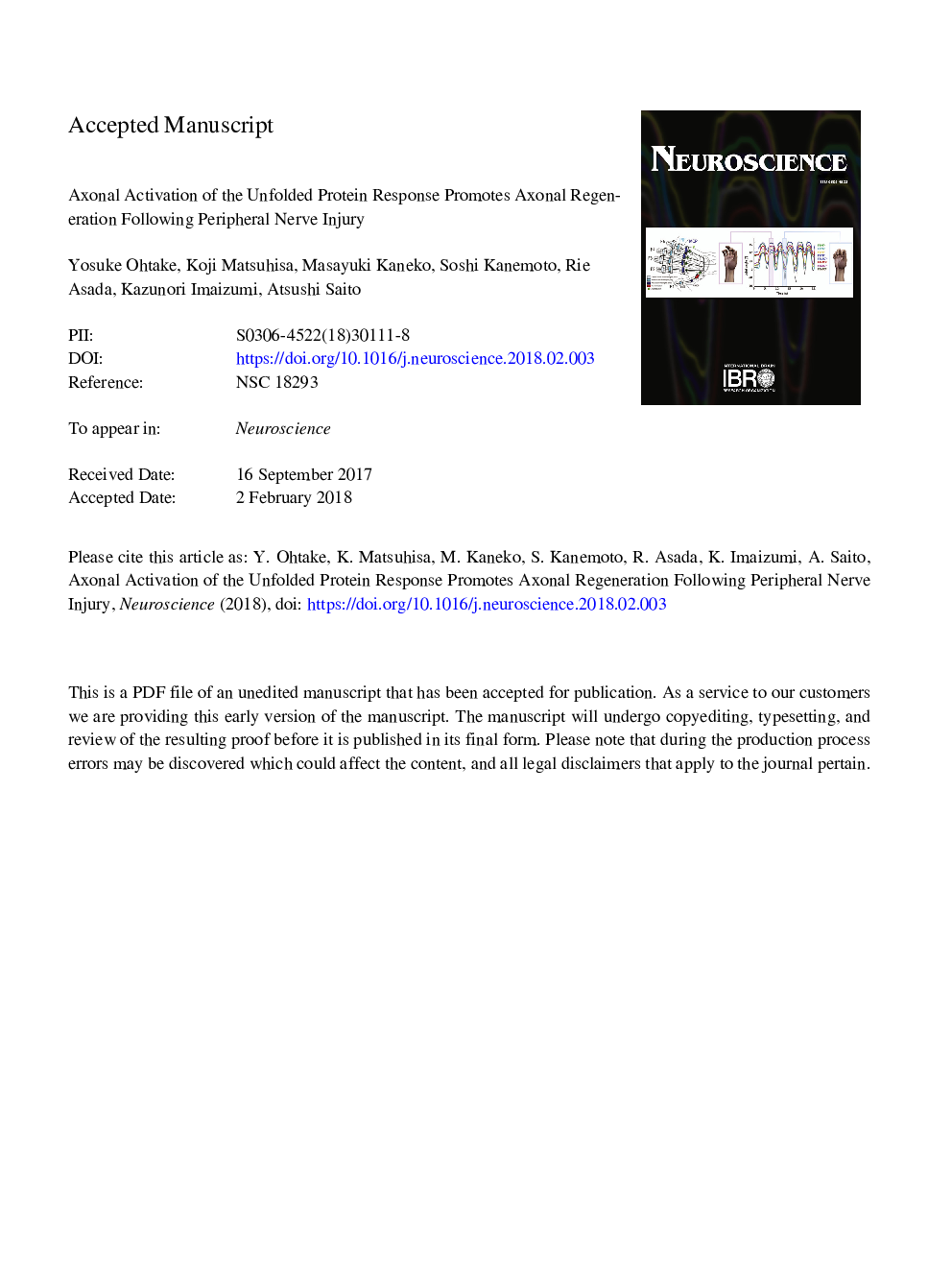| Article ID | Journal | Published Year | Pages | File Type |
|---|---|---|---|---|
| 8840888 | Neuroscience | 2018 | 44 Pages |
Abstract
Adult mammalian peripheral neurons have an intrinsic regrowth capacity in response to axonal injury. The induction of calcium ion (Ca2+) oscillations at an injured site is critical for the regulation of regenerative responses. In polarized neurons, distal axonal segments contain a well-developed endoplasmic reticulum (ER) network that is responsible for Ca2+ homeostasis. Although these characteristics implicate the relevance among injury-induced Ca2+ dynamics, axonal ER-derived signaling, and regenerative responses propagated along the axons, the details are not fully understood. In the present study, we found that Ca2+ release from the axonal ER was accelerated in response to injury. Additionally, axonal injury-dependent Ca2+ release from the ER activated unfolded protein response (UPR) signaling at injured sites. Inhibition of axonal UPR signaling led to fragmentation of the axonal ER and disrupted growth cone formation, suggesting that activation of axonal UPR branches following axonal injury promotes regeneration via regulation of ER reconstruction and formation of growth cones. Our studies revealed that local activation of axonal UPR signaling by injury-induced Ca2+ release from the ER is critical for regeneration. These findings provide a new concept for the link between injury-induced signaling at a distant location and regulation of organelle and cytoskeletal formation in the orchestration of axonal regeneration.
Keywords
Ripk12-APBeIF2αXBP12-aminoethoxydiphenyl borateATF6IRE1UPRRyRIP3RGSK-3βSCG10protein kinase R-like ER kinaseEGTAprotein kinase CμDRGTNFαVGCCsdorsal root ganglionBiPBSART–PCRPeripheral nerve injurybovine serum albuminEDTAethylene diamine tetraacetic acidethylene glycol tetraacetic acidER stressImmunoblottingImmunofluorescenceAxonal regenerationAlzheimer’s diseaseParkinson’s diseasetumor necrosis factor αCHOPEndoplasmic reticulum (ER)peripheral nervous systemendoplasmic reticulumactivating transcription factor 6Growth conereverse transcription–polymerase chain reactionUnfolded protein responseUnfolded protein response (UPR)X-box binding protein 1Binding immunoglobulin Proteinreceptor-interacting protein kinase 1PERKPNSvoltage-gated calcium channelsGlycogen synthase kinase-3βinositol triphosphate receptorRyanodine receptor
Related Topics
Life Sciences
Neuroscience
Neuroscience (General)
Authors
Yosuke Ohtake, Koji Matsuhisa, Masayuki Kaneko, Soshi Kanemoto, Rie Asada, Kazunori Imaizumi, Atsushi Saito,
